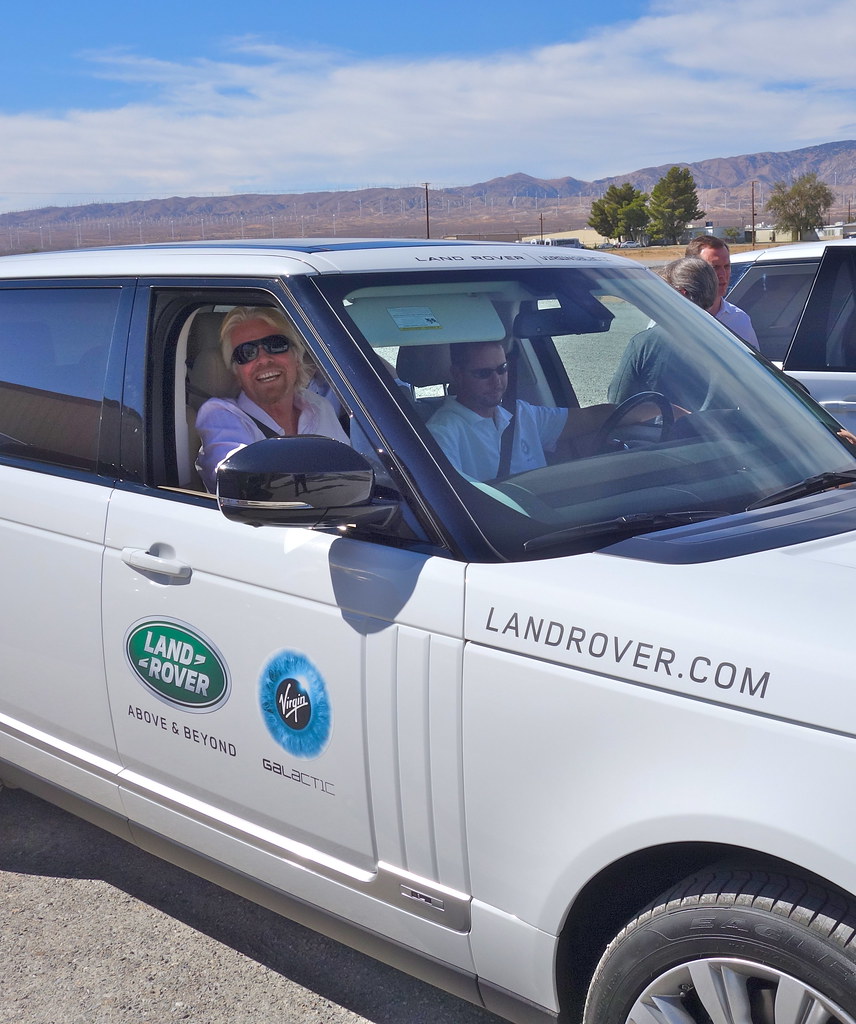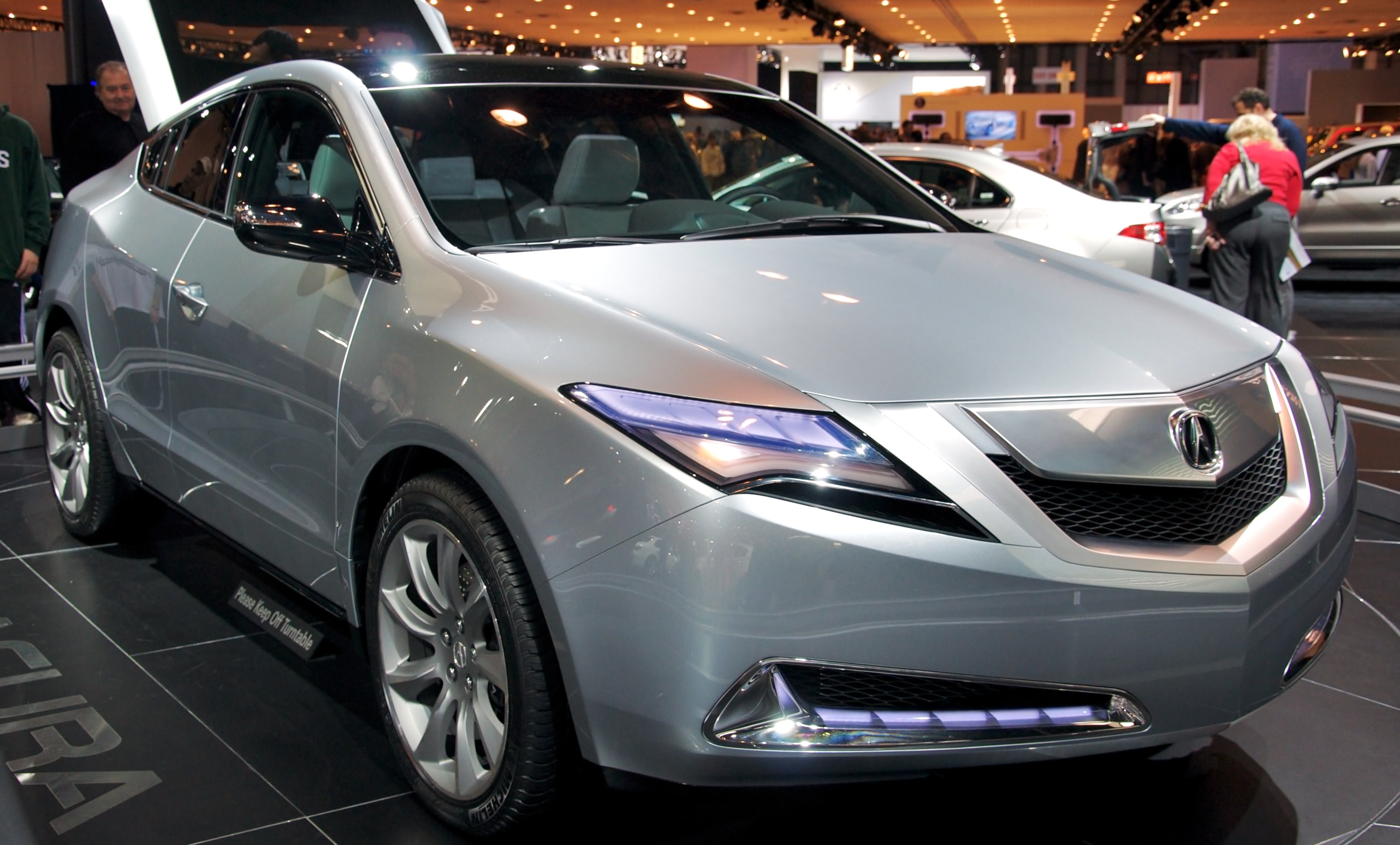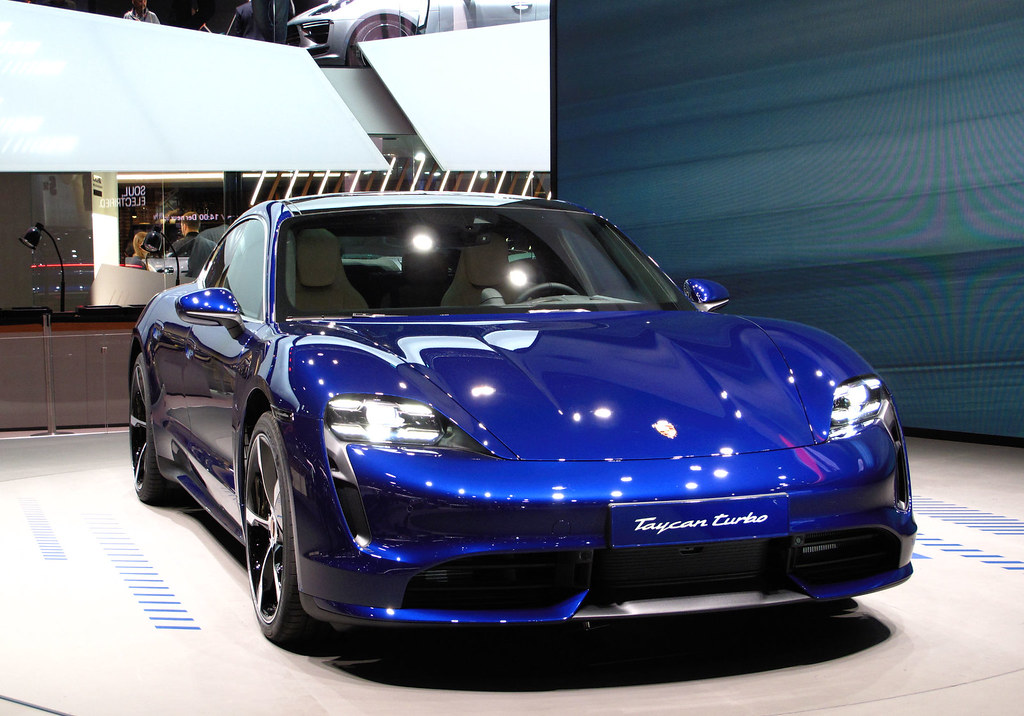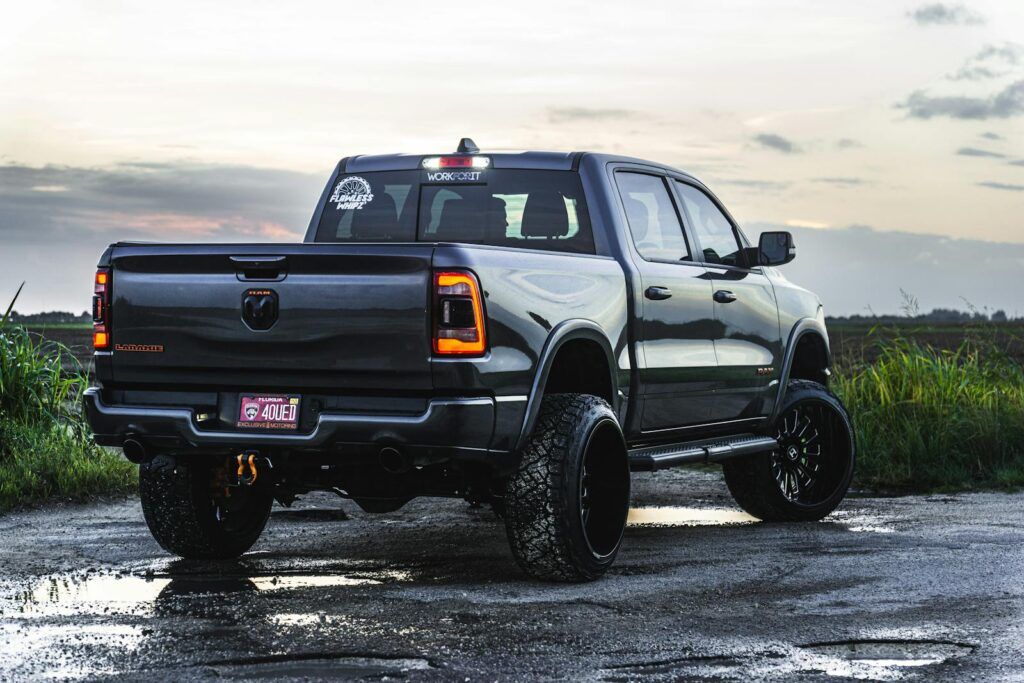
For automotive enthusiasts and collectors, few endeavors bring as much satisfaction as resurrecting a piece of motoring heritage. Whether the goal is a pristine show-winner, a reliable weekend cruiser, or a shrewd long-term investment, the journey of classic car restoration offers a deeply rewarding experience. This pursuit goes beyond mere mechanics, tapping into a rich history of design, engineering, and cultural impact that defines these remarkable machines.
Embarking on a restoration project requires careful consideration, especially for those venturing into the scene for the first time. The ideal project car strikes a crucial balance: it should be rare enough to genuinely capture interest, yet accessible enough to be realistically taken from start to finish without insurmountable hurdles. Key factors include finding a vehicle that can be purchased affordably without being plagued by terminal rust, and crucially, one built with parts that are readily available – ideally from other cars commonly found in local junkyards or through a strong aftermarket network.
Identifying the right candidate can make all the difference, transforming a potentially frustrating ordeal into an enjoyable and educational process. The vehicles presented here represent fantastic restoration candidates, ranging from true vintage classics worthy of any spotlight to more modern icons still cruising the roads. Some might appeal to serious collectors, but most offer the pure joy of restoration and driving without jeopardizing one’s financial future.
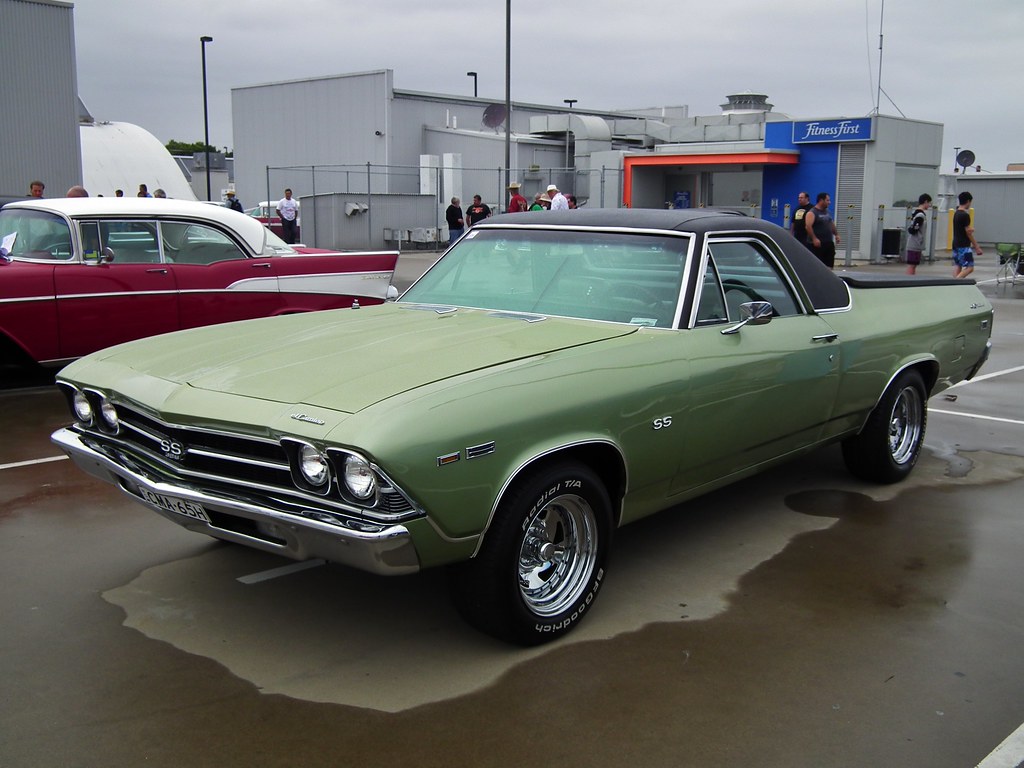
1. **Chevrolet El Camino**The Chevrolet El Camino stands out as a fascinating hybrid, a blend of passenger car comfort and pickup truck utility that offers an incredibly accessible entry point into the world of classic car restoration. Its appeal largely stems from sharing a wealth of major mechanical parts and much of its trim with other General Motors vehicles. This commonality translates directly into restorable models often being available at relatively low prices, making them budget-friendly choices for enthusiasts. For those drawn to specific aesthetics, the 1980s versions, particularly the SS models, are definitely worth considering, as they are essentially GM A/G body cars with pickup beds, simplifying the restoration process considerably. While specific original trim pieces might require a bit of searching, the overall restoration remains both simple and cost-effective.
The lineage of the El Camino traces back to early automotive innovations. The 1920s saw the emergence of the American roadster utility, or ‘roadster pickup,’ representing the first two-door vehicle derived from a passenger car to feature a rear cargo tray. Further evolution occurred in 1932/4, when Ford designer Lew Bandt developed a coupe utility with a fixed roof for an Australian farmer, a concept that resonated as economies improved and a preference for comfort grew. GM Australia responded by producing a Chevrolet coupe utility in 1935, followed by Studebaker’s Coupe Express and Holden’s sedan-based model, laying the groundwork for America’s car-based truck segment.
A pivotal moment in the El Camino’s direct genesis came in 1952 when automotive designer and GM executive Harley Earl proposed the idea of a coupe pickup. This vision materialized in part with the 1955 Chevrolet Cameo Carrier pickup truck, which masterfully blended passenger car styling with a luxurious interior and the option of a V8 engine, effectively acting as a precursor to the El Camino. By 1957, the market was shifting, with Ford, Dodge, and Studebaker beginning to offer flush-side cargo boxes on several pickup trucks, anticipating the broader emergence of the coupe utility body style in America.
The 1957 Ford Ranchero, ingeniously adapted from a two-door station wagon, truly pioneered this new market segment, proving both practical and enjoyable to drive, selling a respectable 21,706 units in its debut. While Chrysler showed minimal interest, GM decided to design its own car-based truck, culminating in the introduction of the Chevrolet El Camino on October 16, 1958, for the 1959 model year. Its design was heralded as “the handsomest thing that has ever happened to hauling,” combining “passenger style car” with “the cargo capacity of a pickup” through its “dramatic slimline” aesthetic.
The El Camino presented a smart coupe utility, designed to be more respectable in the burgeoning 1950s suburban environment compared to more industrial designs. It was described as “an ideal vehicle for busy suburbanites who have both an eye for style and weekend work,” also proving “just right for hard-working farmers, ranchers, or businessmen.” In its inaugural year, it sold 22,246 units, surpassing the Ranchero’s debut. However, a recession and increasing demand for smaller cars unfortunately led to the cessation of first-generation El Camino production by 1960. The El Camino was later revived during the muscle car era in 1964, based on the Chevelle, with high-performance Super Sport models featuring exclusive engines like the iconic 454 V8.
Car Model Information: 2023 Honda Civic EX
Name: Chevrolet El Camino
Caption: 1969 El Camino SS
Manufacturer: Chevrolet
ModelYears: 1959–1960 ,1964–1987
Layout: Front-engine, rear-wheel-drive layout,rear-wheel drive
Class: Coupé utility,Muscle car
Categories: 1960s cars, 1970s cars, 1980s cars, All articles lacking reliable references, All articles needing additional references
Summary: The Chevrolet El Camino is a coupé utility vehicle that was produced by Chevrolet between 1959–1960 and 1964–1987. Unlike a standard pickup truck, the El Camino was adapted from the standard two-door Chevrolet station wagon platform and integrated the cab and cargo bed into the body.
Introduced in the 1959 model year in response to the success of the Ford Ranchero coupé utility, its first run, based on the Biscayne’s B-body, lasted only two years. Production resumed for the 1964–1977 model years based on the Chevelle platform, and continued for the 1978–1987 model years based on the GM G-body platform.
Although based on corresponding General Motors car lines, the vehicle is classified in the United States as a pickup. GMC’s badge engineered El Camino variant, the Sprint, was introduced for the 1971 model year. Renamed Caballero in 1978, it was also produced through the 1987 model year.
Get more information about: Chevrolet El Camino
Buying a high-performing used car >>>
Brand: Chevrolet Model: El Camino
Price: $23,541 Mileage: 56,979 mi.
Read more about: 16 Strange Muscle Cars That Deserve a Second Look
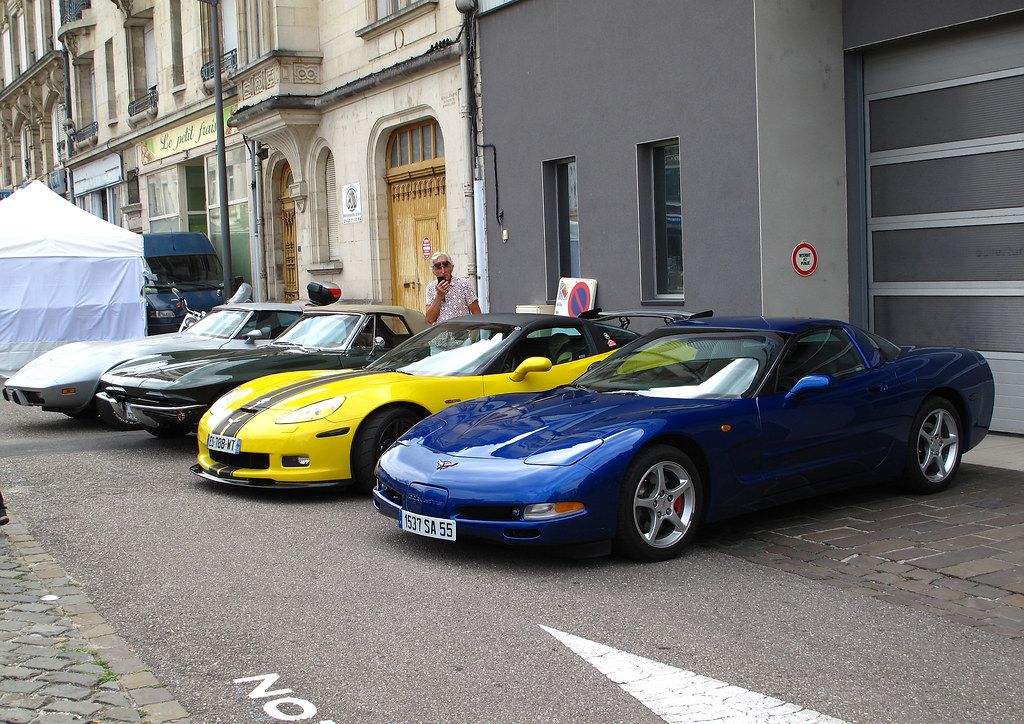
2. **C3 Corvette**The C3 Corvette represents a compelling restoration project, striking a sweet spot in the Corvette lineage. Models older than the C3 typically command sky-high prices, while many newer iterations often lack the distinct excitement of their predecessors. The C3, however, was a genuine head-turner during the disco era and impressively retains that captivating appeal even today, arguably standing as the last truly distinctive Corvette until very recent generations. Enthusiasts can still find C3s in restorable condition at relatively low prices, making them accessible. Their shared major mechanical components with other Chevrolet models from the same era also contribute to a restoration process that doesn’t necessarily have to deplete one’s finances. A crucial piece of advice for prospective restorers is to secure a complete example, especially one with all original trim, as those seemingly minor pieces can accumulate to a substantial cost over time.
This chapter of Corvette history, spanning from 1968, is inextricably linked with the nickname “Shark.” The C3 debuted to a divided response from both enthusiasts and critics, navigating the challenging landscape of ever-evolving emissions regulations throughout the 1970s and 1980s. Interestingly, the development of the C3 began even before the release of the big-block C2 models, underscoring General Motors’ and Corvette’s design team’s determination to avoid a lengthy production run for the C2, akin to the C1’s decade-long tenure. To accelerate this ambitious process, an internal design competition was launched with a clear directive: the new Corvette had to be ready for the 1967 model year.
Two major design teams quickly formed to tackle this challenge, one under the leadership of Zora Arkus-Duntov and the other directed by Frank Winchell, who headed the Chevrolet Engineering Center. The concept of a mid-engine Corvette had been a recurring idea since the early 1950s. While Duntov and Winchell approached the specifics differently, both teams anchored their designs around mid/rear-engine platforms. Their creative influences spanned from the Corvair to celebrated European icons such as the Porsche 911 and the Lamborghini Miura, signaling an ambition for cutting-edge design.
Bill Mitchell, a pivotal figure credited with shaping the C2 Corvette, was not one to remain on the sidelines. He assembled his own team, enthusiastically joining the design fray with a unique vision. Each of the three groups approached the task from distinct angles: Duntov and Mitchell drew heavily on design cues from the early Mako Shark I concepts, while Winchell’s approach leaned more towards Corvair-inspired ideas. Although the sweeping curves and sharp aesthetics of these concepts were visually impressive, they ultimately proved impractical from an engineering standpoint.
The technological limitations prevalent at the time, the availability of specific components, and crucial budget restrictions collectively rendered it impossible for any of the teams to deliver a workable mid/rear-engine Corvette. Consequently, these ambitious concepts were eventually abandoned. Undeterred, Mitchell then partnered with designer Larry Shinoda to craft a new design. This innovative concept bypassed early-stage prototypes, moving directly from sketches to a full-scale model. Its versatile design was capable of accommodating both front and mid-engine layouts, a feature that secured its approval by Chevrolet’s design department and led to its evolution into the Mako Shark II concept car, which captivated audiences on the auto show circuit during the C2’s final production years, subtly hinting at the direction for the next-generation Corvette.
While the Mako Shark II concept generated considerable interest, the real-world production C3 was initially met with criticism. Despite largely retaining the C2’s mechanical foundation, the C3 faced challenges from its very outset. Its aggressive wedge-shaped nose and distinctive ducktail rear wing caused significant front-end lift, a flaw also observed in early Winchell designs. The narrow body restricted crucial airflow to the engine bay, resulting in heat buildup and insufficient cooling. Additionally, the small nose limited air intake to the radiator, exacerbating these overheating issues, problems that unfortunately persisted throughout the C3’s production life. Structural issues also emerged, with concept cars suffering from squeaky roofs due to chassis flex from their one-piece removable roof design. To counteract this, a center roof beam was incorporated for increased rigidity, giving birth to the iconic T-Top, though convertible versions naturally avoided this issue. These multiple setbacks pushed the C3’s production back a full year to 1968. When it finally hit the market, it became evident that the overall build quality had declined compared to both earlier Corvettes and competing cars. Criticism over its radical styling lingered, and even the much-anticipated T-Tops failed to generate the widespread excitement GM had hoped for. A saving grace, however, was the C3’s impressive straight-line speed, particularly in the big-block variants, and the pure driving enjoyment delivered by the sub-400-hp small-block models.
Car Model Information: 2019 Chevrolet Corvette Stingray
Name: Chevrolet Corvette
Caption: 2021 Chevrolet Corvette C8
Manufacturer: Chevrolet
Production: 1953–present
ModelYears: bulleted list
Assembly: bulleted list
Class: Sports car
BodyStyle: coupé
Layout: Front-engine, rear-wheel-drive layout,Rear mid-engine, rear-wheel-drive layout
Categories: 1950s cars, 1960s cars, 1970s cars, 1980s cars, 1990s cars
Summary: The Chevrolet Corvette is a line of American two-door, two-seater sports cars manufactured and marketed by General Motors under the Chevrolet marque since 1953. Throughout eight generations, indicated sequentially as C1 to C8, the Corvette is noted for its performance, distinctive styling, lightweight fiberglass or composite bodywork, and competitive pricing. The Corvette has had domestic mass-produced two-seater competitors fielded by American Motors, Ford, and Chrysler; it is the only one continuously produced by a United States auto manufacturer. It serves as Chevrolet’s halo car.
In 1953, GM executives accepted a suggestion by Myron Scott, then the assistant director of the Public Relations department, to name the company’s new sports car after the corvette, a small, maneuverable warship. Initially, a relatively modest, lightweight 6‑cylinder convertible, subsequent introductions of V8 engines, competitive chassis innovations, and rear mid-engined layout have gradually moved the Corvette upmarket into the supercar class. In 1963, the second generation was introduced in coupe and convertible styles. The first three Corvette generations (1953–1982) employed body-on-frame construction, and since the C4 generation, introduced in 1983 as an early 1984 model, Corvettes have used GM’s unibody Y‑body platform. All Corvettes used front mid-engine configuration for seven generations, through 2019, and transitioned to a rear mid-engined layout with the C8 generation.
Initially manufactured in Flint, Michigan, and St. Louis, Missouri, the Corvette has been produced in Bowling Green, Kentucky, since 1981, which is also the location of the National Corvette Museum. The Corvette has become widely known as “America’s Sports Car.” Automotive News wrote that after being featured in the early 1960s television show Route 66, “the Corvette became synonymous with freedom and adventure,” ultimately becoming both “the most successful concept car in history and the most popular sports car in history.”
Get more information about: Chevrolet Corvette
Buying a high-performing used car >>>
Brand: Chevrolet Model: Corvette
Price: $47,990 Mileage: 20,872 mi.
Read more about: Director’s Cut: 13 Concept Cars That Embody Steven Spielberg’s Visionary Future

3. **1969 to 1978 Datsun Z-Car**Classic Japanese sports cars are experiencing a significant surge in popularity with each passing year, and few vehicles are as iconic or foundational to this movement as the original Datsun Z-Car. For enthusiasts considering a restoration, a “visual” restoration approach, which prioritizes the use of new components wherever possible, is generally recommended as the most effective path. Furthermore, for the sake of both safety and driving enjoyment, it is highly advisable to incorporate a chassis stiffening brace underneath the vehicle. Even when these Z-Cars were new, their chassis were notoriously flexible, a characteristic that certainly hasn’t improved after more than four decades on the road. Addressing this inherent flexibility is crucial for a truly satisfying and safe restoration.
The Nissan S30, more widely recognized as the Datsun 240Z, heralded the debut generation of the Z GT two-seat coupe. This influential model was produced from 1969 through 1978, establishing a legacy for performance and style. Every model within this impressive lineup was engineered with a fully independent suspension system, a sophisticated setup that utilized MacPherson struts in the front and Chapman struts in the rear. For braking capabilities, standard equipment across the range included front disc brakes paired with traditional rear drum brakes, providing reliable stopping power for its era.
Initially, both the 240Z and the 260Z models were equipped with twin, variable venturi Hitachi one-barrel side-draft carburetors. These carburetors were notable for their design, which closely resembled the well-regarded SU carburetors, known for their efficiency and tuneability. However, starting with the 1973 model year, these original carburetors were replaced. This change was implemented primarily to meet increasingly stringent emissions standards, which were becoming a significant concern for automotive manufacturers. Despite the regulatory necessity of the swap, it is widely acknowledged that the original carburetors delivered superior performance compared to the later Weber units that took their place.
For the crucial U.S. market, a significant powertrain upgrade arrived with the introduction of the 280Z in 1975. This model featured L-Jetronic electronic fuel injection, a sophisticated system developed by Bosch. This advanced injection system was not merely an incremental improvement; it was primarily a direct response to the escalating challenge of maintaining adequate engine power output while simultaneously conforming to the rigorous U.S. emissions regulations. Prior to this innovation, achieving this delicate balance with carburetors alone had become increasingly difficult, making the L-Jetronic system a vital step in the Z-Car’s evolution for its American audience.
Read more about: Beyond the Hype: Why Savvy Celebrity Collectors Are Investing Big in Vintage Japanese Sports Cars and What It Means for Your Portfolio
4. **1973 to 1986 Ford Pickup**Few vehicles stir as much nostalgia for a broad spectrum of people as the old Ford pickup, particularly for anyone between the ages of 15 and 65. While these trucks might not always be the most technically sought-after by high-end collectors, models from 1973 onward offer an incredibly appealing proposition for restorers due to their consistent affordability. Trucks built before 1986 possess another distinct advantage: they come without fuel injection, a feature that significantly simplifies the restoration process for many enthusiasts. Furthermore, their unparalleled parts commonality with virtually every other Ford vehicle from the era makes sourcing components an absolute breeze. In essence, these F-Series pickups make for a remarkably fun and approachable restoration project, proving hard to go wrong with, and once meticulously cleaned up and polished to better-than-new condition, they are guaranteed to command attention.
Instead of developing an entirely new chassis, which would not debut until 1980, Ford made a strategic decision for the sixth generation of its F-Series pickup trucks. The company opted to build these new models on the same robust frame and suspension design that had been reliably in use since 1965. Despite retaining this foundational architecture, Ford diligently incorporated enough updates and feature enhancements throughout the subsequent seven years. This commitment to continuous improvement successfully propelled both the F-100 and its newly introduced F-150 sibling to the pinnacle of the American pickup sales rankings, solidifying their market dominance.
Visually, the 1973 Ford F-Series drew heavily upon the styling cues of its respected predecessors, ensuring a sense of familiarity for loyal customers. Ford was careful not to alienate its established fan base, so the updated model retained a recognizable overall silhouette. However, it did introduce a distinctive crease that ran along the side sheet metal from front to back, a defining characteristic that quickly earned the truck its memorable “dentside” nickname. This generation also featured a more defined clamshell hood, which was now equipped with reinforced internal bracing designed to reduce shake, along along with a taller, more prominent grille that contributed to its updated presence.
In 1974, Ford significantly expanded the F-Series lineup with the introduction of a six-passenger extended cab version, aptly dubbed the ‘Supercab.’ This offering provided enhanced versatility, as buyers could choose between a rear bench seat or optional jump seats, catering to varied passenger and utility needs. While the underlying chassis remained a carryover, Ford engineers dedicated their efforts to substantially enhancing other crucial areas of the truck. These improvements included the integration of a larger greenhouse with curved door glass, a robust stamped bed, and cleverly rounded floor corners, all designed to improve both utility and overall durability, adding considerable value for owners.
Significant upgrades were also made to the truck’s rust resistance, a common concern for vehicles of this era. Crucially, the fuel tank was strategically relocated from its previous position beneath the cabin to a safer and more practical spot behind the rear axle, underneath the bed. This intelligent arrangement would become a standard feature for decades, not only enhancing safety but also freeing up valuable interior space, which allowed for a more comfortable seating position within the cabin, further improving the driving and passenger experience.
Car Model Information: 2023 Honda Civic EX
Name: Ford F-Series
Caption: 2022 Ford F-150 Lariat Luxury
Manufacturer: Ford Motor Company
Aka: Ford Lobo (Mexico, 1992–present)
Production: 1948–present
Class: Pickup truck#Full-size pickup truck
Layout: Front-engine, rear-wheel-drive layout,rear-wheel drive
Predecessor: 1941 Ford
Categories: All-wheel-drive vehicles, All Wikipedia articles written in American English, All articles that may contain original research, All articles with unsourced statements, Articles that may contain original research from September 2020
Summary: The Ford F-Series is a series of light-duty trucks marketed and manufactured by the Ford Motor Company since model year 1948 as a range of full-sized pickup trucks — positioned between Ford’s Ranger and Super Duty pickup trucks. Alongside the F-150 (introduced in 1975), the F-Series also includes the Super Duty series (introduced in 1999), which includes the heavier-duty F-250 through F-450 pickups, F-450/F-550 chassis cabs, and F-600/F-650/F-750 Class 6–8 commercial trucks.
Get more information about: Ford F-Series
Buying a high-performing used car >>>
Brand: Ford Model: F-Series Pickup
Price: $23,541 Mileage: 56,979 mi.
Read more about: Behind the Chrome: 14 Major Automotive Scandals That Defined an Industry’s Legacy and Consumer Trust

5. **Flat-Fender Jeep**The flat-fender Jeep is an enduring icon, celebrated for its rugged reliability and toughness, even as Jeep models have continually evolved and modernized over the years. This original civilian version holds a special place in automotive history. For those unfamiliar with the specific terminology, fenders are the protective panels designed to frame and shield the wheel wells of a vehicle, performing precisely what their name suggests: they “fend” off dirt, debris, and road grime flung up by the tires. However, when discussing Jeeps, the concept of a flat fender – or “Flatfender” – is more nuanced and holds significant historical weight, prompting the question of its exact meaning and importance.
Over the last 80 years, the evolution of Jeeps has been considerable, rendering the answer to what constitutes a flat fender a bit layered. Nevertheless, the simplest and most widely accepted definition is this: flat fenders on a Jeep are characterized as slim, angular sheet-metal extensions that visually resemble flat, shelf-like guards positioned directly above the front wheels. In distinct contrast, the rear of the vehicle, often referred to as the tub, features body panels with more conventional wheel cutouts specifically designed to accommodate the back tires, creating a clear visual and structural differentiation from the front.
These distinctive flat fenders are far more than a mere stylistic throwback; they offer profound functional benefits critical for the Jeep’s legendary off-road capabilities. Their design allows for extra clearance, which is essential for accommodating larger off-road tires, thereby enhancing traction and performance on challenging terrain. Furthermore, they significantly improve approach angles, making the vehicle better suited to navigate rugged landscapes and obstacles with greater ease. So profound is their impact that some enthusiasts go as far as to declare that a Jeep without flat fenders isn’t a “real” Jeep at all. While opinions on this assertion may differ, there is no disputing that the original Willys “flatties” are the foundational models of the entire Jeep legacy, and today, these early rigs are enjoying a considerable surge in popularity among serious collectors.
The captivating story of the Jeep began in 1940, a critical juncture when the U.S. Army issued a demanding request for a “light reconnaissance vehicle” to 135 different automakers. The requirements were clear and stringent: they sought a compact 4×4 vehicle capable of carrying a light machine gun, designed to be quick and cheap to fix, and crucially, featuring components like thin metal fenders that would facilitate ease of repair even in the most challenging field conditions. Despite the widespread outreach, only three companies responded to this urgent call: American Bantam, Willys-Overland, and Ford, each embarking on their own interpretation of the military’s demanding specifications.
Each of these pioneering automakers submitted their own prototype for evaluation. Willys-Overland constructed just two units of a vehicle they designated the Quad. American Bantam presented its entry, the BRC-40, an acronym for Bantam Reconnaissance Command. Ford, not to be outdone, entered the competition with its Model GP. These three early 4x4s, despite their individual differences in design and engineering, would eventually all come to be collectively lumped together under one common, now universally iconic name: the “jeep.” And notably, every single one of these foundational vehicles, by design and function, qualified as flat fenders, or “flatties,” cementing their place in history.
As for the precise origin of the ubiquitous term “Jeep,” many assume it is a slurred or phonetic version of the acronym “GP,” which supposedly stood for “General Purpose.” Another common breakdown suggests that “G” denoted a government vehicle and “P” designated an 80-inch wheelbase. However, the true etymology of the term is a bit deeper and more historically rooted than these popular theories suggest. In reality, the term “jeep” actually predates World War II, having first appeared in World War I military slang. During that earlier conflict, it was used informally to describe either a new recruit, often deemed inexperienced, or a new, untested vehicle, highlighting its origin in a context of novelty and unfamiliarity.
Car Model Information: 2016 Jeep Cherokee Latitude
Name: Jeep CJ
Caption: Jeep CJ-2A
Manufacturer: Willys-Overland,Willys Motors,Kaiser Jeep,American Motors Corporation
BodyStyle: Sport utility vehicle,convertible,pickup truck
Production: 1944–1986,More than 1.5 million
Class: sport utility vehicle
Layout: Front-engine, rear-wheel-drive layout,rear-wheel drive
Assembly: Toledo, Ohio,Maywood, California,Santa Isabel, Córdoba,Rocklea, Queensland,São Bernardo do Campo,Brampton, Ontario,Cairo,Haifa,Nof HaGalil,Tehran,Toluca, Mexico State,Zaragoza,Istanbul
Predecessor: Willys MB,Jeep Commando
Categories: AMC vehicles, All articles with unsourced statements, American Motors, Articles with short description, Articles with unsourced statements from April 2025
Summary: The Jeep CJ models are a series and a range of small, open-bodied off-road vehicles and compact pickup trucks, built and sold by several successive incarnations of the Jeep automobile marque from 1945 through 1986. The 1945 Willys “Universal Jeep” was the world’s first mass-produced civilian four-wheel drive car.
In 1944, Willys-Overland, the primary manufacturer of the World War II military Jeep, built prototypes for a commercial version – the CJ, short for “civilian Jeep”. The design was a direct evolution from the wartime Jeep, but the most obvious change was adding a tailgate, and relocating the spare wheel to the side. Also, besides adding basic civilian amenities and options and legally-compliant lighting, the CJ required a sturdier drivetrain than the wartime model, because the targeted rural buyers would expect years of durability, instead of mere weeks as during WWII.
From then on, all CJ Jeeps consistently had a separate body and frame, rigid live axles with leaf springs both front and rear, a tapering nose design with flared fenders, and a fold-flat windshield, and could be driven without doors. Also, with few exceptions, they had part-time four-wheel drive systems, with the choice of high and low gearing, and open bodies with removable hard or soft tops. A few stand-out changes during 42 model years were the introductions of round-fendered vs. flat-fendered bodies (1955 CJ-5), straight-6 and V8 engines, automatic gearboxes, and different 4-wheel drive systems. The 1976 CJ-7 stretched the wheelbase by 10 inches (25 cm), and made doors and a removable hardtop common items.
After remaining in production through a range of model numbers and several corporate parents, the Jeep CJ line was officially ended after 1986. More than 1.5 million CJ Jeeps were built, having continued the same basic body style for 45 years since the Jeep first appeared. Widely regarded as “America’s workhorse”, the CJs have been described as “probably the most successful utility vehicle ever made.” American Motors VP Joseph E. Cappy said the end of “CJ production will signal an end of a very important era in Jeep history.” In 1987, the Jeep CJ-7 was replaced by the first-generation Jeep Wrangler. Looking very similar and riding on the same wheelbase as the CJ-7, it carried over some important components, including its use of leaf springs.
A similar model, the DJ “Dispatcher”, was introduced in 1956 as a two-wheel drive version with open, fabric, or a closed steel body in both left- and right-hand drives for hotel, resort, police, and later United States Postal Service markets.
Get more information about: Jeep CJ
Buying a high-performing used car >>>
Brand: Jeep Model: Flat-Fender
Price: $9,865 Mileage: 109,019 mi.
Read more about: Revving Up History: Hagerty’s Definitive List of the Most Valuable 1950s American Collector Cars
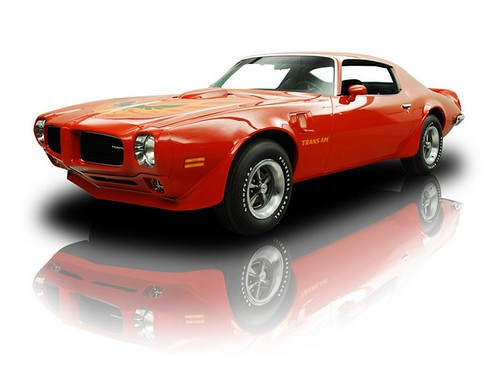
6. **Pontiac Firebird Trans Am**The Pontiac Firebird Trans Am stands as one of the most instantly recognizable muscle cars of the 1970s, an automotive icon whose image has been indelibly etched into popular culture thanks to hits like *Smokey and the Bandit*. This strong connection to nostalgia ensures that these cars hold significant value for enthusiasts. Happily, for those considering a project, the Trans Am remains relatively affordable to acquire and restore in 2025, making it an excellent candidate for anyone looking to own a piece of American automotive history. Its distinctive styling, potent performance, and a thriving community of dedicated fans contribute to its enduring appeal as a worthwhile restoration endeavor.
Within the illustrious Firebird lineage, the Pontiac Trans Am SD-455 stands out as a truly exceptional vehicle, one that only grows more impressive with the passage of time. For this reason, many believe that every gearhead should have the experience of driving a 1973 Pontiac Firebird Trans Am. Securing an SD-455 model would be a monumental achievement, considering only 252 Super Duty units were ever produced, making it exceedingly rare. Estimating a precise price can be tricky due to its extreme scarcity, but locating one, while challenging, is not entirely beyond the realm of possibility. The real test, however, lies in the meticulous restoration process, as many of its specialized mechanical and electrical parts are now outdated or exist in such limited supply that months of planning may be required even before the physical work can commence. Ensuring the engine, known for its robust cylinder block and four-bolt main bearings, is in excellent condition is absolutely critical, and as one might guess, none of this will be inexpensive.
The 1973 film *McQ* provided a memorable cinematic moment for the Trans Am, featuring a 66-year-old John Wayne, who, though carrying only a shadow of his former commanding presence, slid into the driver’s seat of a dark green 1973 Pontiac Firebird Trans Am. While Wayne might have seemed miscast in a gritty detective thriller, a genre clearly chasing the momentum of *Dirty Harry*, the choice of the Trans Am as his character’s vehicle couldn’t have been more appropriate, embodying a measure of stubborn toughness. Today, a Brewster Green 1973 Pontiac Firebird Trans Am 455, outfitted with the highly sought-after four-speed manual transmission, has been listed for auction, showcasing the enduring desirability of these machines.
While this particular example may not claim the title of the most iconic “screaming chicken” in the Firebird lineage – a distinction generally reserved for the Bandit’s car – it undeniably remains a standout vehicle. Positioned at the very brink of the tumultuous 1970s fuel crises, this Trans Am represents a stylish swan song to what many consider the golden age of American muscle cars. It captures a moment in automotive history when performance and flamboyant design reigned supreme before economic shifts forced a reconsideration of automotive priorities.
This specific auction example is described as collector-grade, impressively retaining its original factory paint and displaying an incredibly low 250 miles, although the precise accuracy of the exact mileage remains uncertain. The car proudly rides on classic 15-inch Rally II style wheels, a period-correct touch. It has undergone a meticulous restoration by Restore a Muscle Car (RAMC) in Nebraska, a renowned shop that is exceptionally well-versed in classic Pontiacs, including having worked on several 1977 Bandit-style models. The early ’70s Firebird, even beyond its high-performance variants, carries a unique kind of raw sophistication. While this Trans Am’s L75 7.4-liter 455 engine didn’t quite match the brute force of the specialized Super Duty, it was still a formidable powerplant, delivering a robust 250 horsepower in its factory configuration, ensuring exhilarating performance.
Stepping into the realm of high-investment classic car restoration represents a significant leap, inviting enthusiasts to transform revered vintage rides into pristine, concours-standard masterpieces. This ambitious pursuit goes beyond the practicalities of a daily driver, tapping into the profound joy of preserving automotive history and, for many gearheads, achieving an unparalleled sense of accomplishment. While these projects demand several years of dedication and a substantial financial commitment, the unique rewards of owning and restoring a truly premium classic can be immeasurable, cementing one’s place within an exclusive community of discerning collectors.
The journey into restoring these coveted classics is not for the faint of heart or the shallow of pocket. It requires a meticulous approach, often involving extensive research for specialized parts, skilled craftsmanship, and a deep appreciation for the original engineering and design that made these vehicles legendary. The satisfaction, however, stems from bringing a rare, historically significant machine back to its former glory, often exceeding its original factory condition.
Car Model Information: 2023 Honda Civic EX
Name: Pontiac Firebird
Caption: The second, third, and fourth generations of,the Pontiac Firebird Trans Am
Manufacturer: Pontiac (automobile)
Production: February 23, 1967 – August 30, 2002
ModelYears: 1967 – 2002
Class: Pony car,Muscle car
Platform: GM F platform
Related: Chevrolet Camaro
Layout: Front engine, rear-wheel-drive layout
Categories: 1970s cars, 1980s cars, 1990s cars, 2000s cars, All articles with dead external links
Summary: The Pontiac Firebird is an American automobile built and produced by Pontiac from the 1967 to 2002 model years. Designed as a pony car to compete with the Ford Mustang, it was introduced on February 23, 1967, five months after GM’s Chevrolet division’s platform-sharing Camaro. This also coincided with the release of the 1967 Mercury Cougar, Ford’s upscale, platform-sharing version of the Mustang.
The name “Firebird” was also previously used by GM for the General Motors Firebird series of concept cars in the 1950s.
Get more information about: Pontiac Firebird
Buying a high-performing used car >>>
Brand: Pontiac Model: Firebird Trans Am
Price: $23,541 Mileage: 56,979 mi.
Read more about: Director’s Cut: 13 Concept Cars That Embody Steven Spielberg’s Visionary Future
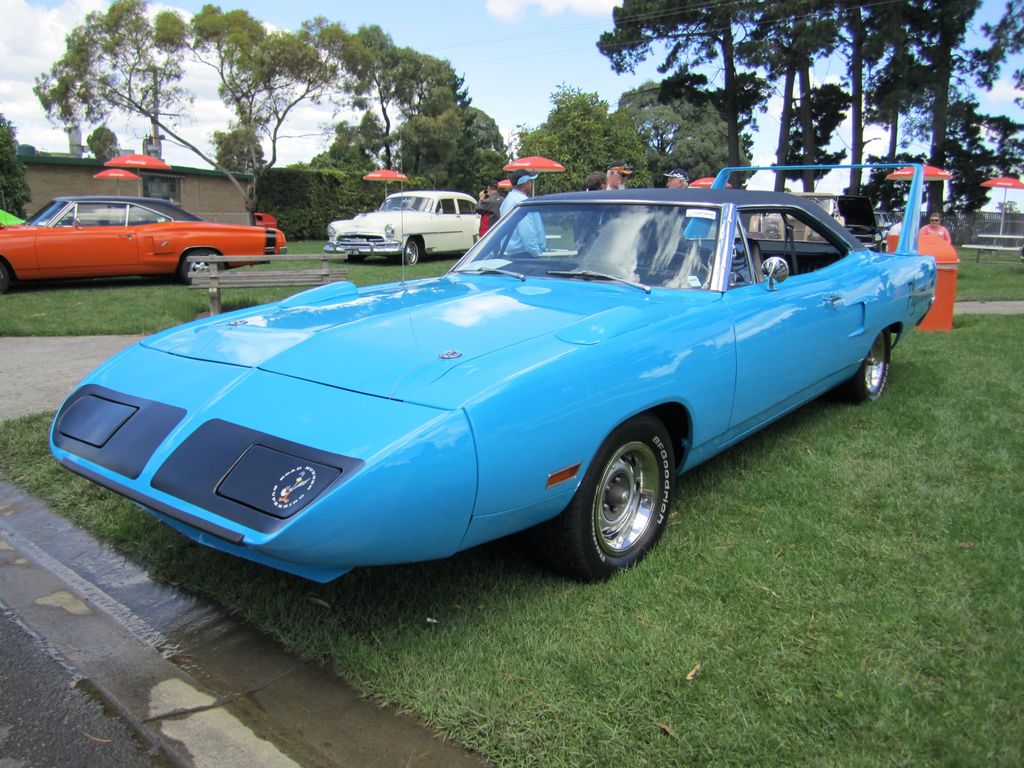
7. **Plymouth Superbird**The 1970 Plymouth Superbird is an undeniable icon, its distinctive, massive rear wing ensuring its immediate recognition in the annals of American muscle car history. Its value is consistently appreciating, a testament to its singular design and racing pedigree. With only approximately 2,000 units ever produced, simply locating an example is a significant challenge in itself, setting the stage for a restoration project that commands serious attention and resources.
Should an enthusiast be fortunate enough to acquire one, the cost of restoration can easily escalate into the hundreds of thousands of dollars, a figure highly dependent on the initial condition of the vehicle. Beyond the visible bodywork, decades of use or storage invariably lead to mechanical issues, requiring extensive attention and adding further to the overall restoration expense. This is a project that demands not only financial commitment but also a deep understanding of its specialized components.
The Plymouth Road Runner Superbird, despite its short-lived production run confined to the 1970 model year, left an indelible mark on both road and track. Its impact extended to luring the legendary NASCAR driver Richard Petty back to Plymouth’s racing team and, significantly, prompted NASCAR to implement new rules to curb the dominance of aero-bodied cars. This radical reworking of the standard Plymouth Road Runner was purpose-built for the track, designed to achieve maximum aerodynamic efficiency and speed.
Its instantly recognizable features – the towering rear wing and the distinctive aerodynamic nose cone – were not merely stylistic choices but functional necessities. Plymouth conceived the Superbird primarily to craft its own answer to the Dodge Charger Daytona and, equally important, to entice Richard Petty to return to their racing roster. These dual objectives fundamentally shaped the car’s radical aerodynamic styling and its formidable high-performance capabilities, solidifying its place as an engineering marvel of its era.
Read more about: Seriously, Where Did They Go? The Fascinating Vanishing Act of 14 Legendary Auto Brands
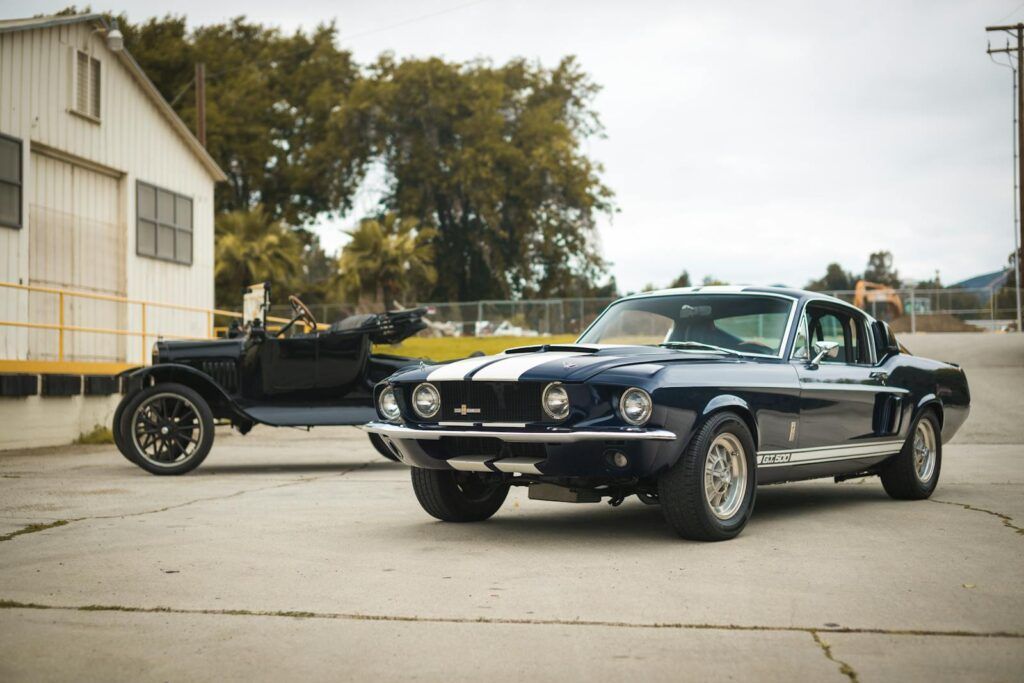
8. **Ford Mustang**While the Ford Mustang, particularly the classic 1960s era ‘Stang, is often cited as an ideal starting point for a novice restorer due to its ubiquity and excellent aftermarket support, the true ambitious restorer often sets their sights on its more exclusive variants. The sheer volume of Mustangs produced—millions—means parts for common models are readily available, and a vast array of online and print resources guide virtually any restoration task. However, for those seeking a premium, high-investment challenge, specific, rarer models like the Boss 351 present an entirely different proposition.
The 1971 Ford Mustang Boss 351 holds a legendary status for a confluence of reasons, marking the end of an era in multiple aspects. It represented the final iteration of the first-generation Mustang, the last true muscle car to emerge from Ford’s golden age, and the ultimate racing-specification Mustang of its time. Furthermore, it distinguished itself as one of the earliest fastback Mustang models. With such a rich tapestry of historical milestones woven into a single vehicle, its commanding value today is entirely comprehensible.
Given its condition, a 1971 Boss 351 can currently fetch up to $125,000 on the market, with even those in fair condition still valued around $45,000. This high valuation is primarily driven by its scarcity; Ford produced fewer than 2,000 units in 1971, and estimates suggest only about 630 remain today, making it a truly rare find. When it first debuted, the Boss 351 had an all-inclusive price just over $4,100, which, adjusted for inflation, would be approximately $31,000 today.
This was not merely a car defined by its looks or rarity; it featured a distinct powertrain and a surprisingly comprehensive equipment package for its time. Engineered with performance as its core objective, it was designed to excel in both drag racing and challenging road course environments. However, the 1971 model year marked the sole availability of the Boss 351. While the visually similar Mach 1 continued production through 1973, the Boss 351’s single-year run was cut short as the impending fuel crisis reshaped the Mustang lineup for subsequent generations, solidifying its place as a fleeting yet potent legend.
Car Model Information: 2008 Ford Mustang GT Premium
Name: Ford Mustang
Caption: 2018 Ford Mustang GT 5.0
Aka: Ford T5 (Germany)
Manufacturer: Ford Motor Company
Production: March 1964 – present
ModelYears: 1965–present
Class: Unbulleted list
BodyStyle: Unbulleted list
Layout: Front-engine, rear-wheel-drive layout
Categories: 1970s cars, 1980s cars, 1990s cars, 2+2 coupés, 2000s cars
Summary: The Ford Mustang is an American automobile manufactured and marketed by Ford since 1964, as Ford’s longest nameplate in continuous production. Currently in its seventh generation, it is the fifth-best selling Ford car nameplate. The namesake of the “pony car” automobile segment, the Mustang was developed as a highly styled line of sporty coupes and convertibles derived from existing model lines, initially distinguished by its pronounced “long hood, short deck” proportions.
Originally predicted to sell 100,000 vehicles yearly, the 1965 Mustang became the most successful vehicle launch since the 1927 Model A. Introduced on April 17, 1964 (16 days after the Plymouth Barracuda), over 400,000 units were sold in its first year; the one-millionth Mustang was sold within two years of its launch. In August 2018, Ford produced the 10-millionth Mustang; matching the first 1965 Mustang, the vehicle was a 2019 Wimbledon White convertible with a V8 engine.
The success of the Mustang launch led to multiple competitors from other American manufacturers, including the Chevrolet Camaro and Pontiac Firebird (1967), AMC Javelin (1968), and Dodge Challenger (1970). It also competed with the Plymouth Barracuda, which was launched around the same time. The Mustang also had an effect on designs of coupes worldwide, leading to the marketing of the Toyota Celica and Ford Capri in the United States (the latter, by Lincoln-Mercury). The Mercury Cougar was launched in 1967 as a unique-bodied higher-trim alternative to the Mustang; during the 1970s, it included more features and was marketed as a personal luxury car.
From 1965 until 2004, the Mustang shared chassis commonality with other Ford model lines, staying rear-wheel-drive throughout its production. From 1965 to 1973, the Mustang was derived from the 1960 Ford Falcon compact. From 1974 until 1978, the Mustang (denoted Mustang II) was a longer-wheelbase version of the Ford Pinto. From 1979 until 2004, the Mustang shared its Fox platform chassis with 14 other Ford vehicles (becoming the final one to use the Fox architecture). Since 2005, the Mustang has used the D2C platform, unique to the Mustang.
Through its production, multiple nameplates have been associated with the Ford Mustang series, including GT, Mach 1, Boss 302/429, Cobra (separate from Shelby Cobra), and Bullitt, along with “5.0” fender badging (denoting 4.9 L OHV or 5.0 L DOHC V8 engines).
Get more information about: Ford Mustang
Buying a high-performing used car >>>
Brand: Ford Model: Mustang
Price: $16,785 Mileage: 81,832 mi.
Read more about: Director’s Cut: 13 Concept Cars That Embody Steven Spielberg’s Visionary Future
9. **Chevrolet Corvette Stingray (C2)**The Chevrolet Corvette Stingray (C2) stands as a monument to American automotive design and performance, exuding an unmatched swagger and attitude that arguably few modern iterations can truly emulate. For the discerning collector, finding the C2 of their dreams presents a significant challenge, one that intensifies considerably when factoring in the extensive effort and specialized work demanded by its restoration. These mid-60s Corvettes are highly collectible and promise substantial return on investment when restored to their correct and exacting standards.
The primary difficulty in restoring a C2 Corvette lies in its unique design, specifically its chassis and shortened wheelbase. These characteristics make the task of sourcing the correct, period-accurate parts a particularly arduous endeavor, often requiring extensive networks and patience. Unlike more common restoration projects, the intricate design details and specialized components of the C2 necessitate a highly detailed and often bespoke approach to restoration.
For those fortunate enough to unearth a coveted 1963 model, especially one complete with the highly sought-after rear split window, a clear understanding of the financial commitment is paramount. Such a rare and iconic feature adds immensely to the vehicle’s value and, consequently, the restoration process. It is not uncommon for the restoration costs of these exceptional C2 models to potentially exceed the initial purchase price of the car itself, underscoring the level of investment required for a flawless revival of this classic.
The C2 Corvette Sting Ray offers a compelling blend of performance, inimitable style, and undeniable prestige. It’s mechanically complex yet incredibly rewarding to bring back to life. While locating one in restorable condition is increasingly difficult, the enduring appeal and appreciation potential of a meticulously restored C2 make the endeavor well worth the significant effort, time, and financial outlay for serious enthusiasts.
Car Model Information: 2023 Honda Civic EX
Categories: All article disambiguation pages, All disambiguation pages, Disambiguation pages, Short description is different from Wikidata
Summary: Chevrolet Corvette Stingray was the name for several model years of Chevrolet Corvettes:
Corvette Stingray (concept car), concept cars from 1959 and 2009
Chevrolet Corvette (C2), the second generation of the Corvette, introduced in 1963, referred to as the Corvette Sting Ray
Chevrolet Corvette (C3), the third generation of the Corvette, introduced in 1968, referred to as the Corvette Stingray from 1969 through 1976 — in 1968, the Corvette did not have the Stingray badging
Chevrolet Corvette (C7), the seventh generation of the Corvette, introduced in 2014, referred to as the Corvette Stingray
Chevrolet Corvette (C8), the eighth generation of the Corvette, introduced in 2020, referred to as the Corvette Stingray
These generations did not use the name stingray:
Chevrolet Corvette (C1), the first generation of the Corvette, introduced in 1953
Chevrolet Corvette (C4), the fourth generation of the Corvette, introduced in 1984
Chevrolet Corvette (C5), the fifth generation of the Corvette, introduced in 1997
Chevrolet Corvette (C6), the sixth generation of the Corvette, introduced in 2005
Get more information about: Chevrolet Corvette Stingray
Buying a high-performing used car >>>
Brand: Chevrolet Model: Corvette Stingray
Price: $23,541 Mileage: 56,979 mi.
Read more about: Director’s Cut: 13 Concept Cars That Embody Steven Spielberg’s Visionary Future
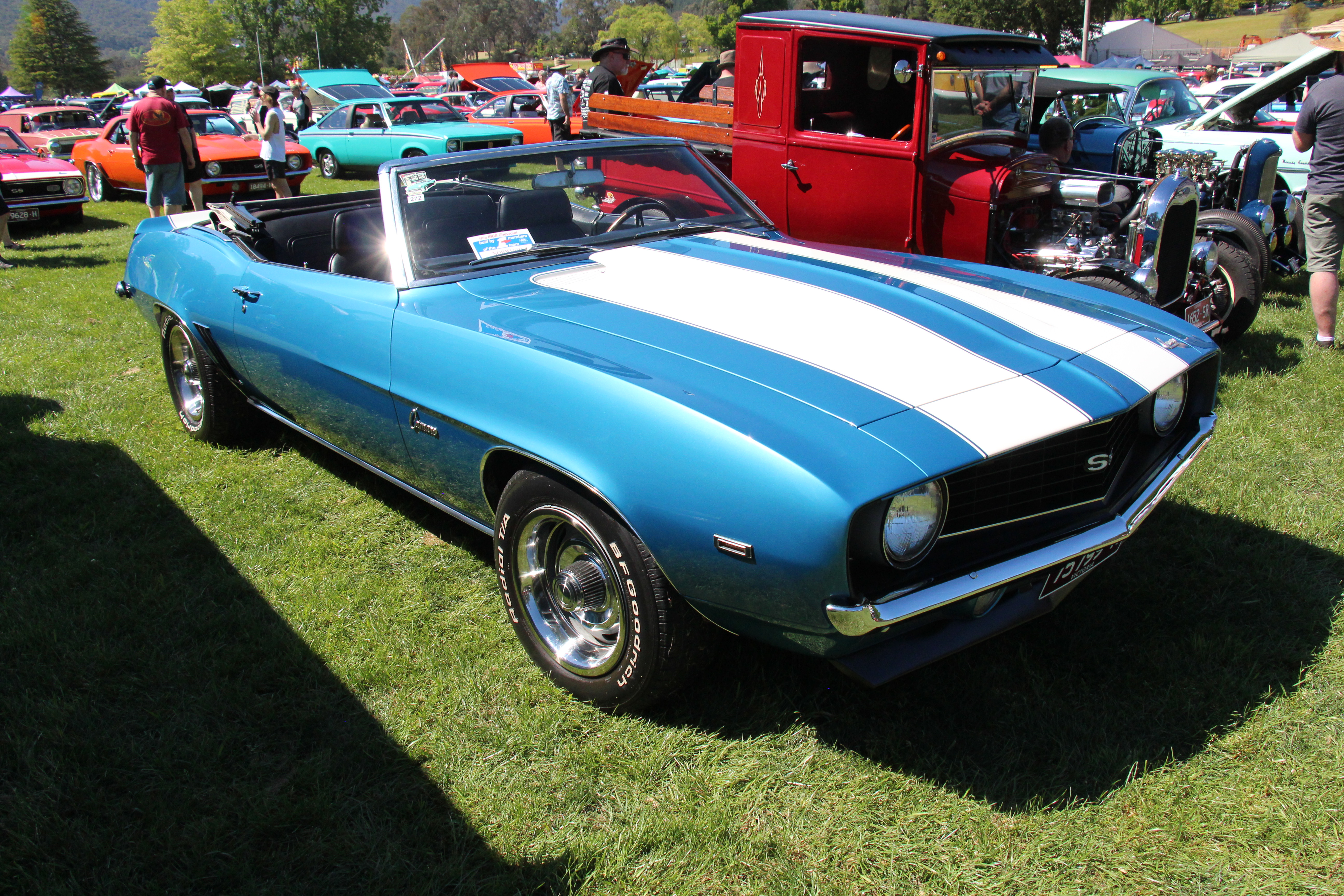
10. **1967–1969 Chevrolet Camaro**The first-generation Chevrolet Camaro, spanning from 1967 to 1969, is arguably one of the most iconic American muscle cars ever produced, consistently ranking as a top choice for restorers. Its widespread popularity ensures a robust aftermarket, meaning parts are readily available, simplifying the restoration process compared to more obscure classics. The fan base surrounding these early Camaros is immense, fostering a strong community for support, advice, and camaraderie among enthusiasts.
Whether it’s an SS, Z/28, or a base model, a first-generation Camaro represents a solid classic car investment that continues to see its values climb steadily. This appreciation is driven by its timeless design, powerful performance options, and its deep cultural significance as a direct competitor to the Ford Mustang in the burgeoning pony car market of the late 1960s. For restorers, this translates into a project that is not only enjoyable but also financially sound, offering a strong return on a well-executed restoration.
Born from the need to compete with Ford’s wildly successful Mustang, the Camaro emerged in the late ’60s as Chevrolet’s answer, offering Bow Tie buyers a compelling option without the blue oval on the hood. This rivalry ignited a golden age of muscle cars, with the Camaro quickly establishing its own legendary status. The engineering behind these models combined robust powertrains, often big-block or small-block V8s, with a sporty chassis, offering exhilarating performance straight from the factory.
Restoring a 1967–1969 Camaro allows for a wide range of possibilities, from period-correct museum pieces to personalized restomods that blend classic aesthetics with modern performance and comfort. The sheer volume in which these cars were produced means that decent examples, while appreciating, can still be found. The robust rebuild culture and vast availability of original stock and replacement parts at reasonable prices make this muscle legend an accessible yet deeply rewarding high-investment restoration.
Car Model Information: 2018 Chevrolet Camaro 1LS
Name: Chevrolet Camaro
Manufacturer: Chevrolet
Production: 1966–2002,2009–2023
ModelYears: 1967–2002,2010–2024
Class: Pony car
BodyStyle: coupe,convertible
Platform: GM F platform,GM Zeta platform,GM Alpha platform
Layout: Front-engine, rear-wheel-drive layout
Categories: 1970s cars, 1980s cars, 1990s cars, 2+2 coupés, 2000s cars
Summary: The Chevrolet Camaro is a mid-size American automobile manufactured by Chevrolet, classified as a pony car. It first went on sale on September 29, 1966, for the 1967 model year and was designed to compete with the Ford Mustang. The Camaro shared its platform and major components with the Firebird, produced by General Motors’ Pontiac division that was also introduced for the 1967 model year.
Four distinct generations of the Camaro were developed before production ended in 2002. The nameplate was revived on a concept car that evolved into the fifth-generation Camaro; production started on March 16, 2009.
Production of the sixth generation of the Camaro ended in December 2023, for the 2024 model year.
Get more information about: Chevrolet Camaro
Buying a high-performing used car >>>
Brand: Chevrolet Model: Camaro
Price: $18,785 Mileage: 69,196 mi.
Read more about: Revving Through Time: The 16 Muscle Cars That Defined the 60s and 70s with Unforgettable Power and Style

11. **1955–1957 Chevrolet Bel Air**No comprehensive list of classic cars truly worthy of restoration would be complete without acknowledging the legendary ‘Tri-Five’ Chevrolets, particularly the 1955–1957 Chevrolet Bel Air. These post-war icons embody a quintessential era of American elegance and optimism, their designs resonating with a deep sense of nostalgia for a bygone automotive golden age. Their graceful lines, distinctive chrome accents, and vibrant color palettes make them visually stunning, commanding attention at any car show or cruise-in.
The enduring appeal of the Bel Air stems not only from its aesthetic beauty but also from its incredible versatility. It serves as an ideal canvas for a variety of restoration approaches, whether the goal is a meticulously period-correct revival that preserves every factory detail, or a tasteful restomod that integrates modern mechanicals and comforts without sacrificing its iconic visual identity. This adaptability contributes significantly to its sustained popularity among serious collectors and enthusiasts alike.
Mechanically, the Tri-Five Chevys were well-engineered for their time, featuring robust V8 engines that offered significant power and a relatively straightforward architecture, which aids in the restoration process. The strong enthusiast community and abundant aftermarket support for these models ensure that parts, from engine components to interior trim, are generally available, albeit sometimes at a premium for concours-quality items. This accessibility helps in mitigating some of the challenges typically associated with restoring vehicles of this vintage.
Beyond their mechanical and aesthetic attributes, the 1955-1957 Bel Airs hold immense cultural significance. They symbolize the burgeoning post-war prosperity and the dawn of American automotive innovation, becoming synonymous with the vibrant street culture of the 1950s. Restoring a Bel Air is not merely about fixing a car; it’s about preserving a tangible piece of Americana, celebrating a design language that defined a generation, and reigniting the powerful nostalgia these beautiful machines effortlessly evoke.
Car Model Information: 2023 Honda Civic EX
Name: Chevrolet Bel Air
Caption: 1957 Chevrolet Bel Air convertible
Manufacturer: Chevrolet
Production: 1949–1980
ModelYears: 1950–1981
Class: Full-size
Layout: FR layout
Predecessor: Chevrolet Fleetline,Chevrolet Biscayne
Successor: Chevrolet Impala
Categories: 1950s cars, 1960s cars, 1970s cars, 1980s cars, Articles with short description
Summary: The Chevrolet Bel Air is a full-size car produced by Chevrolet for the 1950–1981 model years. Initially, only the two-door hardtops in the Chevrolet model range were designated with the Bel Air name from 1950 to 1952. With the 1953 model year, the Bel Air name was changed from a designation for a unique body shape to a premium level of trim applied across a number of body styles. The Bel Air continued with various other trim level designations, and it had gone from a mid-level trim car to a budget fleet sedan when U.S. production ceased in 1975. Production continued in Canada, for its home market only, through the 1981 model year.
Get more information about: Chevrolet Bel Air
Buying a high-performing used car >>>
Brand: Chevrolet Model: Bel Air
Price: $23,541 Mileage: 56,979 mi.
Read more about: Beyond the Legends: 15 Affordable Classic Pontiacs Every Enthusiast Should Consider for Their Garage

12. **1981–1989 Porsche 911 (G-Series)**For those enthusiasts whose passion leans towards European classics, the air-cooled Porsche 911, particularly the G-Series models produced from 1981 to 1989, stands out as an exceptionally smart and rewarding choice for a restoration project. These vehicles represent a captivating blend of old-school design purity and surprisingly modern drivability, offering an analog driving experience that is increasingly rare in today’s automotive landscape. Their engineering precision, typical of Porsche, provides a robust foundation for a high-quality restoration.
The G-Series 911s have seen their values steadily rise over the years, making them a solid classic car investment. This appreciation is driven by a growing recognition of the unique character and enduring appeal of air-cooled Porsches, especially as newer generations transition to water-cooled engines. Investing in a meticulous restoration of a G-Series means not only enjoying a superb driving machine but also potentially realizing a significant financial return as these models continue to become more coveted.
While their European precision might suggest complexity, the fundamental design of the 911 is well-understood by a dedicated community and specialist workshops. Restoring one involves a deep dive into Porsche’s engineering philosophy, from its iconic flat-six engine to its distinctive torsion bar suspension. Although some specialized parts may require sourcing from Europe or through dedicated channels, the overall support network for these cars is strong, reflecting their status among collectors.
The 1981–1989 Porsche 911 (G-Series) captures a pivotal moment in the 911’s evolution, offering a compelling blend of classic aesthetics with refined performance. Its appreciating value, coupled with the profound satisfaction of bringing a piece of Stuttgart’s engineering excellence back to its prime, makes it an ideal project for the ambitious restorer. This is a restoration that culminates in not just a car, but an experience, embodying the timeless spirit of Porsche’s legendary sports car.
Car Model Information: 2021 Porsche 911
Name: Porsche 911
Caption: The 1 millionth 911 produced on display at Volkswagen Group Forum, Berlin
Designer: Ferdinand Alexander Porsche
Manufacturer: Porsche
Production: September 1964 – present
Assembly: Stuttgart,Baden-Württemberg
Class: Sports car
BodyStyle: unbulleted list
Related: unbulleted list
Layout: Rear-engine design,rear-wheel drive
Predecessor: Porsche 356
Categories: 1970s cars, 1980s cars, 1990s cars, 2+2 coupés, 2000s cars
Summary: The Porsche 911 model series (pronounced Nine Eleven or in German: Neunhundertelf, or colloquially Neunelfer) is a family of two-door, high performance rear-engine sports cars, introduced in September 1964 by Porsche of Stuttgart, Germany, and now in its eighth generation. All 911s have a rear-mounted flat-six engine, and usually 2+2 seating, except for special 2-seater variants. Originally, 911s had air-cooled engines, and torsion bar suspension, but the 911 has been continuously enhanced, and evolved across generations. Though the 911 core concept has remained largely unchanged, water-cooled engines were introduced with the 996 series in 1998, and front and rear suspension have been replaced by Porsche-specific MacPherson suspension up front, and independent multi-link rear suspension.
The 911 has been raced extensively by private and factory teams, in a variety of classes. It is among the most successful competition cars. In the mid-1970s, the naturally aspirated 911 Carrera RSR won world championship races including Targa Florio and the 24 Hours of Daytona. The 911-derived 935 turbo also won the 24 Hours of Le Mans in 1979. Porsche won the World Championship for Makes in 1976, 1977, 1978, and 1979 with 911-derived models.
In a 1999 poll to determine the Car of the Century, the 911 ranked fifth — one of two in the top five that had remained continuously in production (the original Beetle remained in production until 2003). The one millionth example was manufactured in May 2017 and is in the company’s permanent collection.
Get more information about: Porsche 911
Buying a high-performing used car >>>
Brand: Porsche Model: 911
Price: $126,995 Mileage: 8,629 mi.
Embarking on the journey of classic car restoration, whether it involves an accessible muscle car or a premium European icon, is a profoundly satisfying endeavor. It’s an immersive experience that allows enthusiasts to connect with automotive history on a deeply personal level, blending mechanical skill with an artistic vision to resurrect a piece of the past. The profound satisfaction comes not just from the gleaming final product, but from every meticulously researched part, every expertly applied coat of paint, and every hour spent breathing new life into these magnificent machines. The roar of a re-tuned engine, the flawless finish, and the admiring glances at a car show are merely the outward manifestations of a passion that runs deep, a testament to the enduring allure and intrinsic worth of vintage vehicles. Truly, few accomplishments bring greater joy to a gearhead than transforming a worn-out dream into a showroom-quality reality, proving that reliability and beauty can indeed endure for generations.

